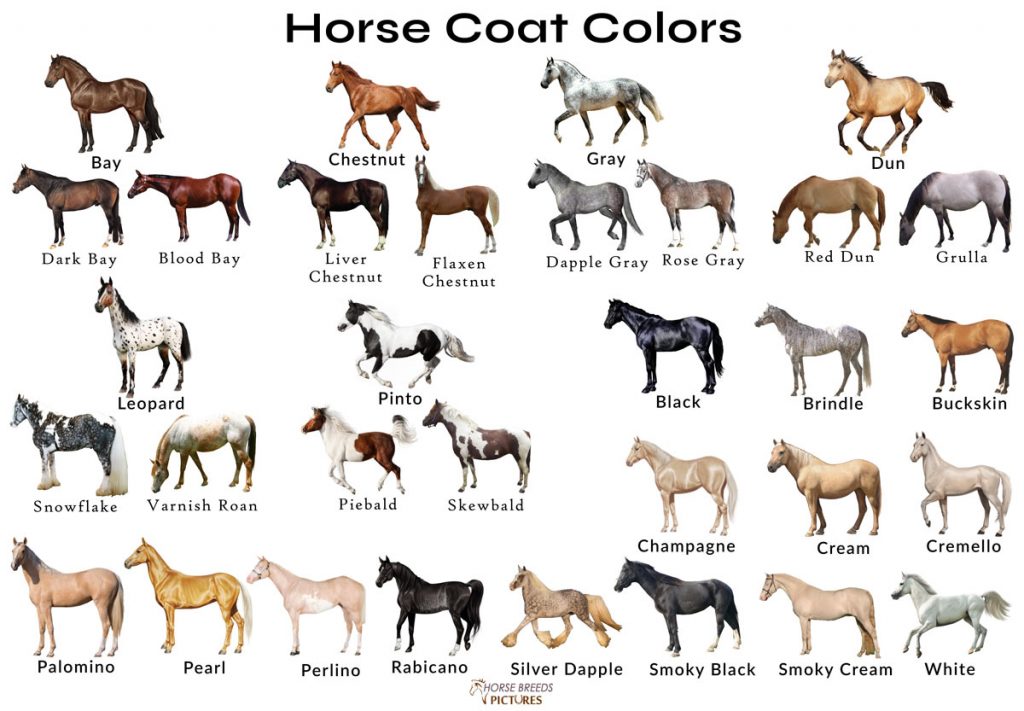Horse Colors
Horses display a variety of coat colors and may have several variations within any of these particular colors. While a few horses may change color as they age, most horses retain the same coat color all through their life. However, the underlying skin color may change due to a disease.
Horses typically start out with either chestnut (also called red) or black as the basic coat color. The chestnut or red coat occurs due to the absence of extension gene (‘e’) while black is produced by the presence of extension gene (‘E’).
Horse Color Chart |
||
Common Coat Colors |
||
| 1. Bay Variations: Dark Bay, Blood Bay, Brown | 2. Chestnut Variations: Basic Chestnut, Sorrel, Liver Chestnut, Flaxen Chestnut | 3. Gray Variations: Salt and Pepper Gray, Dapple Gray, Fleabitten Gray, Rose Gray |
Relatively Rare Coat Colors |
||
| 1. Black Variations: Fading Black, Non-Fading Black | 2. Brindle | 3. Buckskin |
| 4. Champagne | 5. Cream | 6 Cremello |
| 7. Dun Variations: Grulla, Red Dun, Bay Dun, Buckskin Dun | 8. Leopard Variations: Blanket, Varnish Roan, Snowflake, Few Spot Leopard, Frost | 9. Palomino |
| 10. Pearl | 11. Perlino | 12. Pinto Variations: Piebald, Skewbald, Overo, Sabino, Tobiano, Tovero |
| 13. Rabicano | 14. Roan Variations: Blue Roan, Red Roan, Bay Roan | 15. Silver Dapple |
| 16. Smoky Black | 17. Smoky Cream | 18. White |
The coat color of horses is determined by genetics, and changes in genes are responsible for different colors and variations. In addition to the colors listed above, there are several genetic modifiers, including the Agouti, Sooty, Pangaré, Flaxen, and Mushroom that affect equine coat colors. Other than colors, horses can be identified using the distinctive markings or patterns (such as white, brindle, pinto, or Appaloosa) that appear on their coat.




